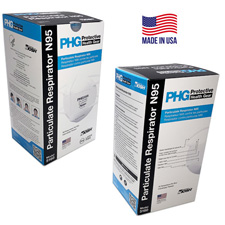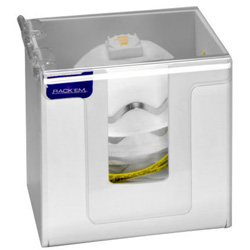| The Home page of ILPI's Safety Data Sheet (SDS) Resource, the leader in SDS information since 1995! | |
| The history and philosophy behind this resource. | |
| A curated collection of books and reference materials concerning Safety Data Sheets and closely related topics. | |
| Paste your plain text SDS into the SDS-Demystifier, and it will be converted into a hypertext-enriched document with links to detailed explanations of each key term. | |
| An extensive list of frequently asked questions about Safety Data Sheets including regulations, content, compliance, and more. | |
| A humorous take on Safety Data Sheet jargon. Fill in the blanks on our entry form to generate a personalized Unsafety Data Sheet to share with your coworkers. | |
| Since 1995, we've maintained this massive curated list of the best places to find Safety Data Sheets on the Internet. | |
| You are here! Way more than a glossary, this hypertext-enhanced resource covers hundreds of SDS-related terms and expert knowledge. Each entry includes both the SDS relevance and links to additional authoritative resources. | |
| Archived results of Safety Data Sheet related polls taken by some of our millions of site visitors | |
| The OSHA regulations behind SDS regulations, including the inspection guidelines and over 400 official interpretations letters under the Hazard Communication Standard | |
| Commercial suppliers of SDS authoring and management software as well as cloud compliance services. | |
| Commercial companies that will create SDS's for your specific needs as well as SDS translation companies. |

Safety signs, banners, and scoreboards? Get yours at Safety Emporium!

Get your PPE such as NIOSH-approved N95 masks and face shields from Safety Emporium.
Definition
A respirator (of the "approved" type) is a device which has met the requirements of 42 CFR part 84, has been designed to protect the wearer from inhalation of harmful atmospheres, and has been approved by the National Institute for Occupational Safety and Health (NIOSH) and the Mine Safety and Health Administration (MSHA).
Note: 42 CFR part 84 supercedes/replaces 30 CFR part 11, effective July 10, 1995. The change dealt primarily with particulate respirators. See https://www.cdc.gov/niosh/npptl/topics/respirators/pt84abs2.html for details.
Additional Info
There are many different kinds of respirators used to prevent or reduce inhalation of hazardous or toxic materials. These fall into two general classes:
- Atmosphere-supplying respirators. These respirators provide breathing air from a source independent of the surrounding atmosphere. Three types of atmosphere-supplying respirators are:

Air-line respirators (also called an air-supplied respirator or supplied air respirator, SAR). The respirator is connected to a stationary source of compressed breathing air source by a hose. The air is delivered continuously or intermittently in a sufficient volume to meet the wearer's breathing requirements. Obviously, the user is restricted by the length of the hose connection, and the dangers of damage to the hose. Also see this OSHA article, Deaths Involving the Inadvertent Connection of Air-line Respirators to Inert Gas Supplies. 
Self-contained breathing apparatus (SCBA). This is much like the apparatus a SCUBA diver or fire fighter might use. Air is supplied from a compressed cylinder, usually through a full-face mask, which is worn on the back. This gives greater movement than an air-line respirator, but the air supply is limited. 
Combination respirators have a small, auxiliary self-contained air supply that can be used if the primary supply fails. - Air-purifying respirators. These contain an air-purifying filter, cartridge, or canister that removes specific air contaminants by passing ambient air through the air-purifying element. These do not supply oxygen and must only be used when there is sufficient oxygen to sustain life and the air contaminant level is below the concentration limits of the device.
In addition, these cartridges/canisters usually do not include any method of indicating when their ability to remove air contaminants has been reduced. Read the manufacturer's instructions for cartridge maintenance and replacement or see the OSHA link below.
There are three basic kinds of air-purifying respirator.
 | Particulate respirators use a mechanical filter to remove particulate matter such as dusts. Do not assume that your respirator removes particulates or vapors; READ the labels and manufacturer's instructions. NIOSH has a discussion of particulate filtering classification, marking, and approved labels that explains what terms like N95, R99, and P100 mean. Note: Ear loop surgical-style masks are not classified as respirators. These do not provide a good seal and are generally unacceptable for protection from particulates in occupational settings. |
 | Gas and vapor respirators (or chemical cartridge respirators) use chemicals such as activated charcoal to remove specific gases and vapors from the air. These are effective for concentrations of no more than ten times the TLV of the contaminant, if the contaminant has warning properties (odor or irritation) below the TLV. |
 | Combination respirators have filters for both particulates and vapors. Powered air-purifying respirators (PAPR) (not shown) use a blower to force the ambient air through air-purifying elements to the inlet covering. |
Some other respirator terms worth knowing are:
- Demand respirators are atmosphere-supplying respirators that admit breathing air to the facepiece only when a negative pressure is created inside the facepiece by inhalation. This is the same mechanism used in SCUBA (diving) gear.
- Negative pressure respirators (tight fitting) have negative (lower) air pressure inside the facepiece with respect to the ambient air pressure outside the respirator during inhalation.
- Positive pressure respirators have a pressure inside the respiratory inlet that exceeds the ambient air pressure outside the respirator.
- Pressure demand respirators are positive pressure atmosphere-supplying respirators that admit breathing air to the facepiece when the positive pressure is reduced inside the facepiece by inhalation.
- Escape-only respirators are intended to be used only for emergency exit.
- High efficiency particulate air (HEPA) filters are at least 99.97% efficient in removing monodisperse particles of 0.3 micrometers in diameter. The equivalent NIOSH particulate filters specified in 42 CFR 84 are the N100, R100, and P100 filters.
Books Available
NOTE: We may collect a share of sales or other compensation from the links in the following list:
- "Handbook of Respiratory Protection: Safeguarding Against Current and Emerging Hazards", Hardcover, 579 pages, 2017. Estimated price: $156.97. Info and/or order.
- "Respiratory Protection Against Hazardous Biological Agents, 1st Edition", Hardcover, 184 pages, 1997. Estimated price: $113.10. Info and/or order.
- "Respiratory Protection Handbook", Paperback, 560 pages, 1997. Estimated price: $69.95. Info and/or order.
- "Toxicology of Chemical Respiratory Hypersensitivity", Hardcover, 1997. Estimated price: $150.00. Info and/or order.

Ensure your workers are trained with safety posters and more from Safety Emporium.
If the material you are working with requires the use of a respirator, this information will be found in Section 8 (exposure controls/personal protection) of the Safety Data Sheet. If the SDS author was competent, a specific type of respirator will be recommended for the particular hazard.
Respirators should be used for protection only when engineering controls (for example, enclosure or confinement of the operation, general and local exhaust ventilation (such as fume hoods), and substitution of less toxic materials) have been shown to be infeasible for the control of the hazard or during the interim period when engineering controls are being installed.
Keep in mind the following facts about respirators:
- Respirators provide adequate protection only if employers ensure, on a constant basis, that they are properly fitted and worn. In many cases, proper fitting must be conducted by a trained professional and may require employees to shave facial hair (for face-fitting styles).
- Respirators protect only the employees who are wearing them from a hazard, rather than reducing or eliminating the hazard from the workplace as a whole. Eliminate the hazard at its source!
- Respirators are uncomfortable to wear, cumbersome to use, and interfere with communication in the workplace. Overall their use is generally worse to everyone's safety and health compared to a safety program that eliminates the need for respirators in the first place.
- The costs of operating a functional respiratory protection program are substantial. Routine use of respirators requires regular medical examinations, fit testing, training, and the purchasing of expensive equipment.
Further Reading

Make your PPE readily available with safety dispensers from Safety Emporium.
- OSHA can help you select an appropriate respirator, cartridge changing schedule and lots more with their Respiratory Protection eTool.
- 29 CFR 1910.134, OSHA's Respiratory Protection Standard.
- OSHA's Respiratory Protection resources page with all kinds of helpful info.
- OSHA Small Entity Compliance Guide For Respiratory Protection Standard (690K, PDF file).
- OSHA Publication 3790, Respirator Medical Evaluation Questionnaire (257K, PDF file).
- More respirator topics at NIOSH.
- NIOSH has a very handy Respirator Fact Sheet that is subtitled "What You Should Know in Deciding Whether to Buy Escape Hoods, Gas Masks, or Other Respirators For Preparedness At Home and Work".
- Respirators - Respirator Selection, a fact sheet from Canada's CCOHS.
- Permissible Exposure Limits at OSHA.
- NIOSH Respirator Filter Classes discusses N-, R- and P-series designations such as N95 and P100.
- Visit our retail store, Safety Emporium, for NIOSH-approved N95 respirators and other PPE such as face shields.
See also: asthma, emphysema, fume hood, respiratory.